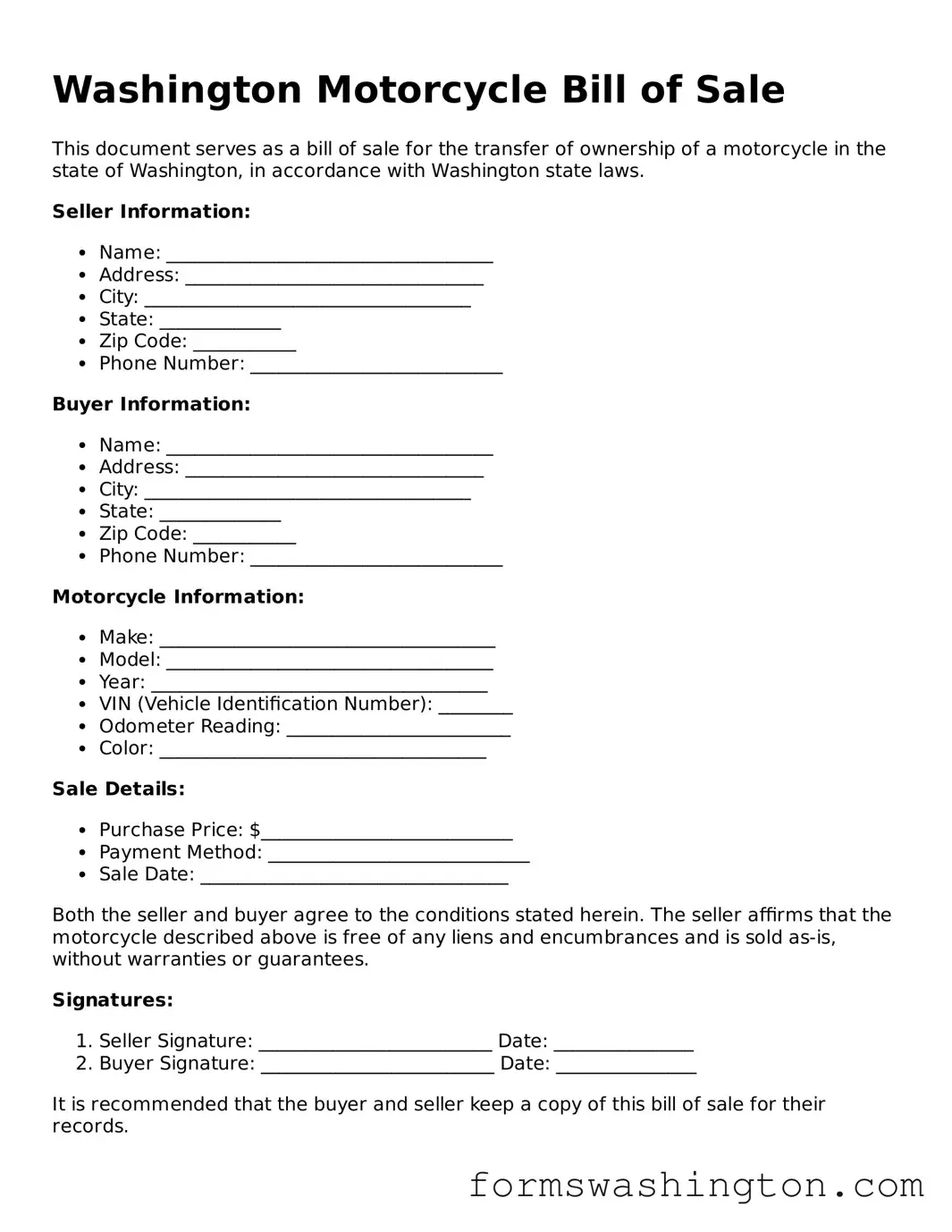Blank Motorcycle Bill of Sale Template for Washington State
The Washington Motorcycle Bill of Sale form is a legal document used to record the sale of a motorcycle in the state of Washington. This form provides essential details about the transaction, including information about the buyer, seller, and the motorcycle itself. Having a properly completed bill of sale can help protect both parties and ensure a smooth transfer of ownership.
Open Editor Here
